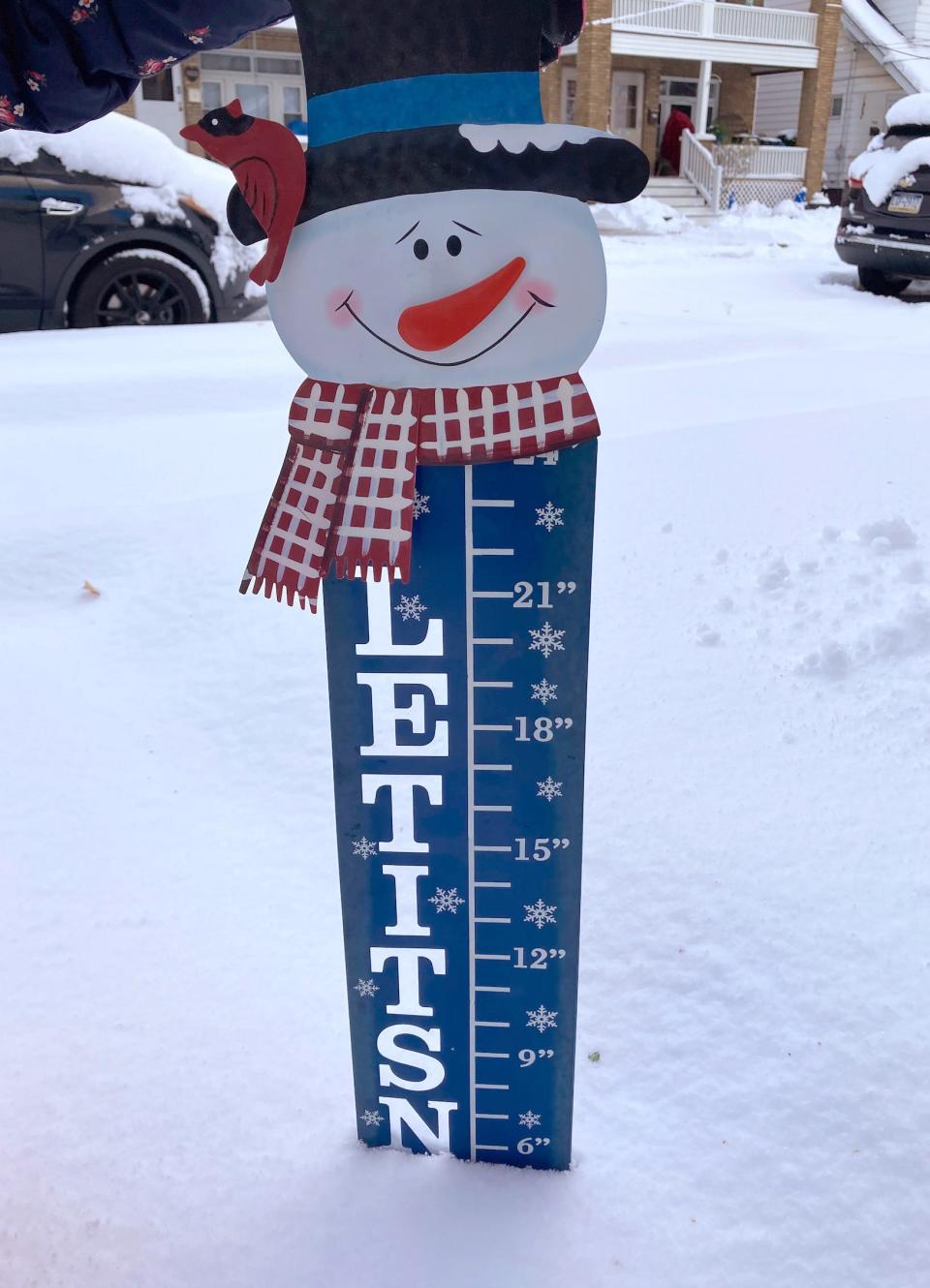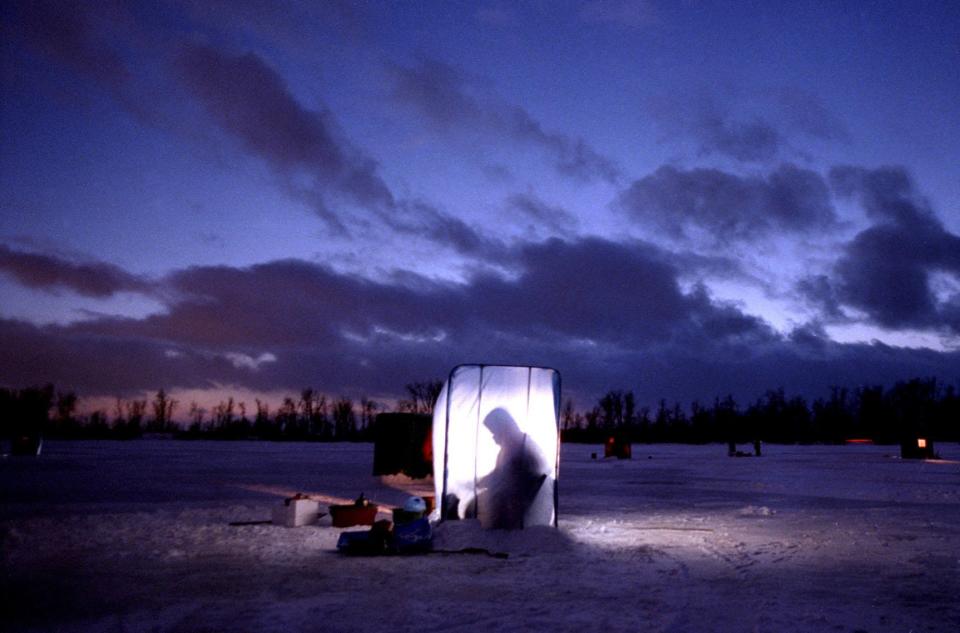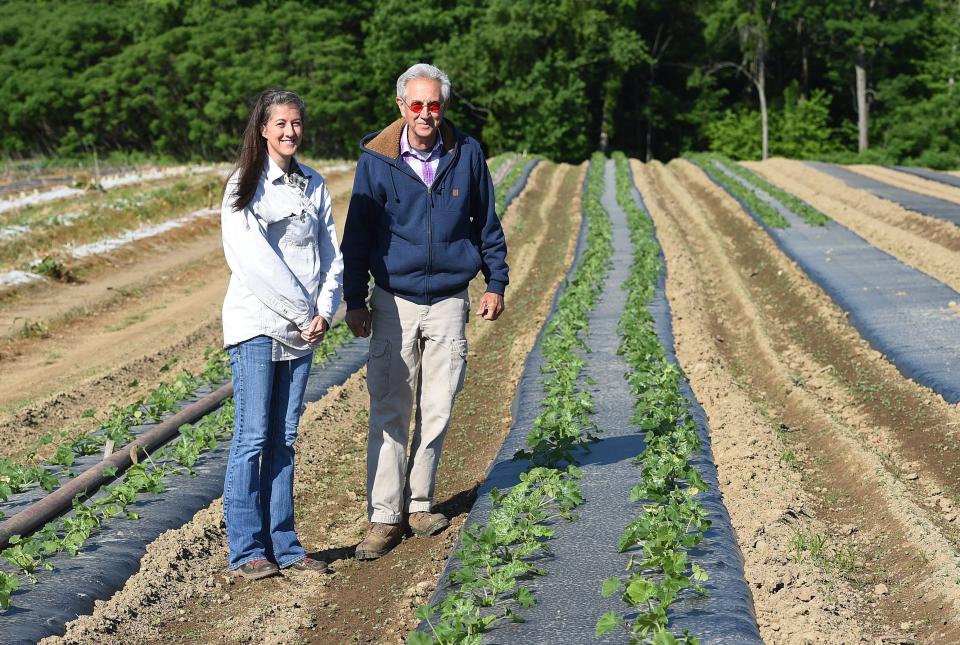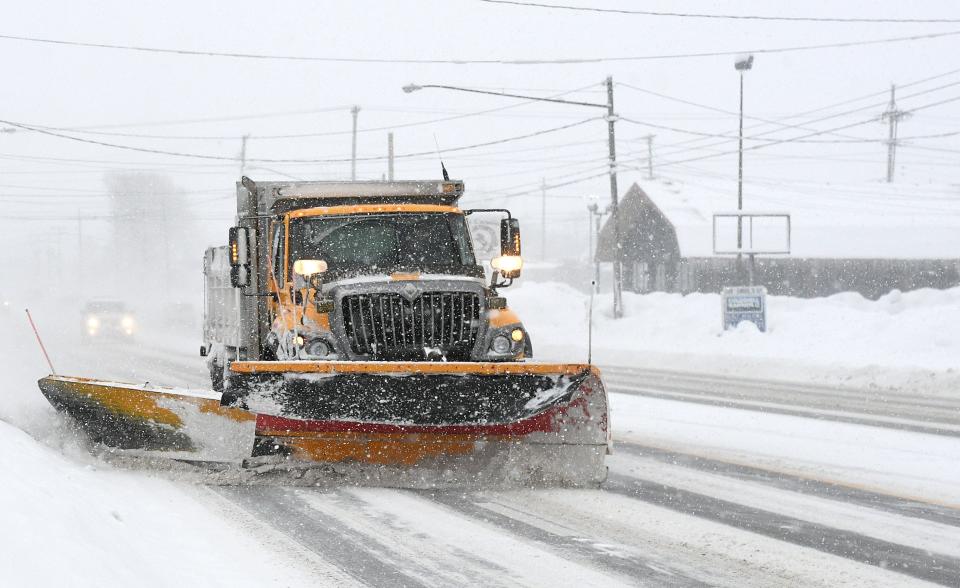Erie's winter that wasn't comes to an end. See the surprising 2022-23 snowfall total
Another winter is in the book, and statistics from the National Weather Service in Cleveland bear out what has been apparent for a while.
In a region known for its snowy winters, the winter of 2022-2023 around Erie will likely be remembered for the snow that didn't fall.
February: Highmark Quad Games ski race canceled because of lack of snow
Winter doesn't officially start until December, but winter weather often starts sooner. Snow totals for Erie from July 1 through March 20 total 51.6 inches, according to data from the National Weather Service in Cleveland. The average snowfall during that same period is 97.8 inches, or nearly twice as much, according to the Weather Service.

The good and bad
Some of the effects are obvious. Snowblowers, so challenging to find during the record-setting winter of 2017-2018, can still be found in local stores, along with shovels, bags of salt and ice scrapers.
It was bad business for commercial plow operators and good news for the residents and businesses who have to pay for those services.

The impact on tourism was mixed, said John Oliver, CEO of VisitErie, Erie County's tourism promotion agency.
"It's good and it's bad," he said. "With it being as mild as it was, we lost skiers. The slopes were down. I know we lost ice fishermen with the bay never freezing. That has an impact on it (tourism)."
More:Erie County tourism recovers after COVID-related slump
Oliver said the prospect of a carefree drive to Erie might have helped destinations like Splash Lagoon Indoor Water Park.
"I think it's a tough answer to give," Oliver said. "I think there are people who depend on the cold. I think others might benefit from the lack of snow."
The numbers, however, point to an improvement over last year. Emily Biddle, a spokeswoman for VisitErie, said newly released numbers show hotel occupancy for January and February was up 9% from 2022.
December: Is there anywhere in Pennsylvania to ice fish in this slightly cold weather?
Slowdown on the slopes
It wasn't the kind of winter that inspires a ski resort operator.
"It's been challenging," said Nick Scott Jr., vice president of Erie-based Scott Enterprises, which owns Peek'n Peak Resort in Findley Lake, New York.
More:A 13-year-old boy from Greece launched what would become Erie's Scott Enterprises
A lack of snow didn't shut down the slopes. The resort has been open all winter and remains open now.
But it wasn't business as usual.
Both Scott and Andrew Halmi, general manager of Mount Pleasant of Edinboro, said weather conditions prompted them to make more snow than usual.
Halmi, who said Mount Pleasant has the capacity to convert 1,200 gallons of water into snow per minute, described it as a costly process.
"It's not a cheap date. We would much rather Mother Nature give the snow to us," he said.
More: PA ski resorts bypass Mother Nature. 'We rely about 95% on manmade snow.'
Despite the lack of natural snow, Mount Pleasant had a good year, he said.
"We are going to be able to stay open more days than last year," Halmi said on Thursday. "By this time last year, we were actually closed."
Scott said the Peak was hurt most by the perception that there wasn't enough snow to ski.
"Many of the people in this market are skiers," Scott said. "Skiers love to ski. They know we make manmade snow and they see our cameras online. They still come up."
In a year like this one, he said, casual skiers are more likely to stay home.
The bottom line, Scott said, is that the weather still shapes the fortunes of a ski resort.
"Every department gets affected," he said. "Sometimes our business is feast or famine. You are like a farmer in that you depend on the weather."
Season preview: Erie-area ski and snowboard resorts open with some upgrades. Here are the details
The impact on agriculture
Gordon Post, the owner of Post Apple CSA in North East Township, is happy about the money he saved clearing snow from his driveway this year.
It's too soon to say what effect a mild winter will have on Post, who operates a commercial apple orchard and hopes to have 200 subscribers this year in his CSA, or consumer-supported agriculture program.

A heavy blanket of snow is known to have benefits for farmers. Not only does melting snow provide a controlled release of moisture into the soil, but snowflakes also trap nitrogen and contribute to soil fertility, according to a report from Michigan State University Extension.
But the lack of snow cover doesn't mean local fields will be dry.
"If you look at the rainfall we had, I expect the amount of water that we got would be close to what you would have if you had twice as much snow," Post said.
Numbers from the National Weather Service support that observation. Climate data shows that Erie has recorded 11.25 inches of precipitation so far in 2023. That's up nearly 4 inches from a year-to-date average of 7.41 inches.
But abundant rainfall isn't a perfect replacement for snow.
"The fact is that rain runs off and snow dissipates slowly, so it is going to be a little drier, maybe," Post said.
But Post is used to weather-related problems, like the tomatoes that were too water-logged to harvest after relentless rains this past fall. So, he's not too worried about less-than-normal snowfall.
"I am living against Lake Erie," he said. "It's hard to think the lack of snow is going to amount to much as far as hurting us."
December: Erie-area frostbite patients sent to Pittsburgh burn unit for treatment
Roads that need less plowing
Less snowfall meant less time spent plowing local roads and less salt to spread.
But the savings, at least initially, will be modest, said Jill Harry, a spokeswoman for PennDOT.
Through March 1, winter maintenance spending for Erie County stood at $4.81 million. On the same date last year, PennDOT had spent $5.04 million to clear Erie County roadways.

Several factors kept the savings from being greater, Harry said. First, a number of the winter's heaviest snows fell during holidays or weekends, leaving PennDOT with higher overtime costs, she said
While less road salt was used, Harry said PennDOT is contractually obligated to purchase at least 75% of the amount originally ordered. That means PennDOT will likely start next winter with salt already on hand.
PennDOT also saves by reducing wear and tear on plow trucks, she said.
So, what happens to the money that PennDOT did save?
"We just invest it in a different way," Harry said. "We still use it on the roads in Erie County."
More: PennDOT's $154M Erie construction season ends. Here's what got done, plus 2023 preview
Contact Jim Martin at jmartin@timesnews.com.
This article originally appeared on Erie Times-News: Spring 2023 arrives in Erie PA after winter with unusually little snow

